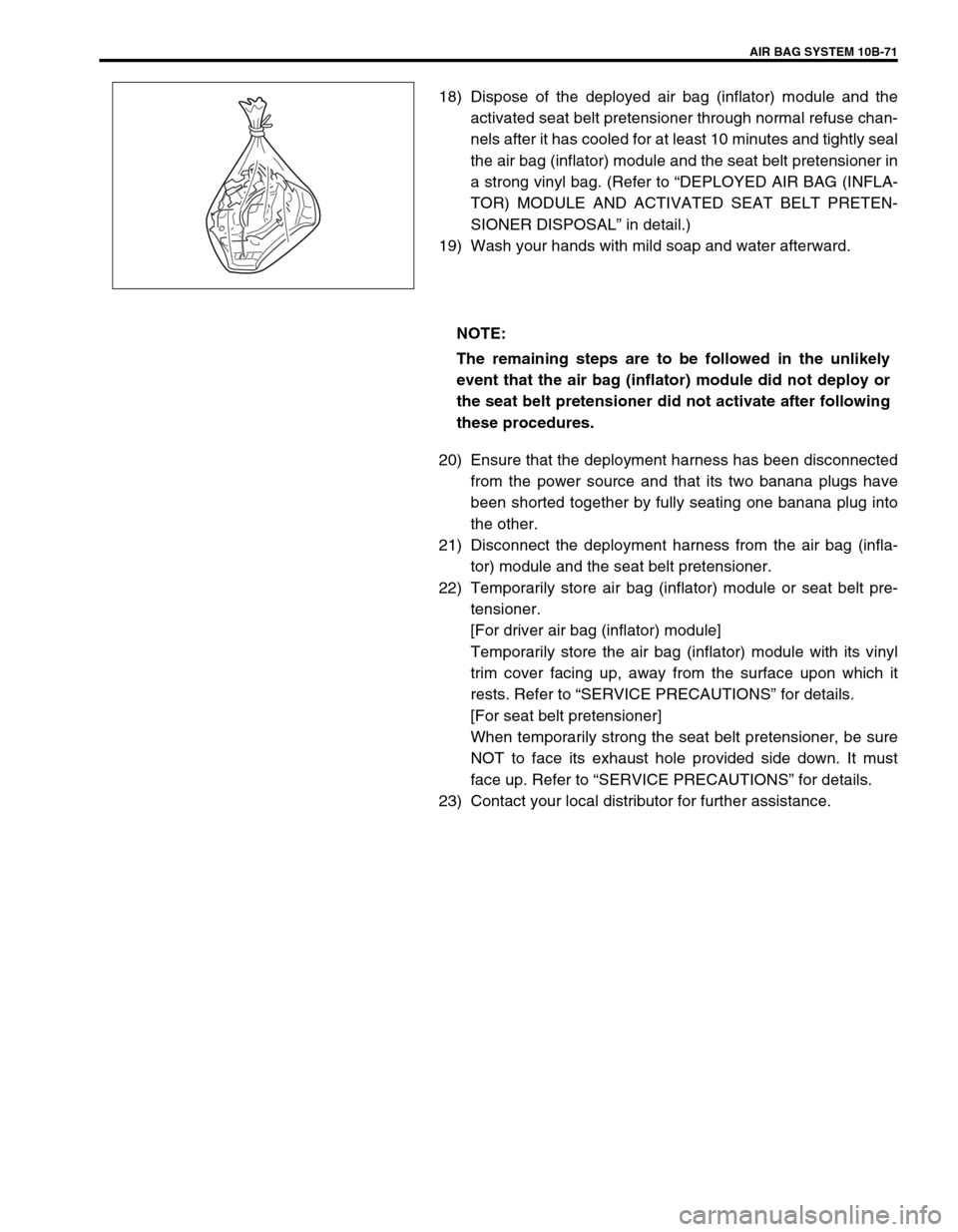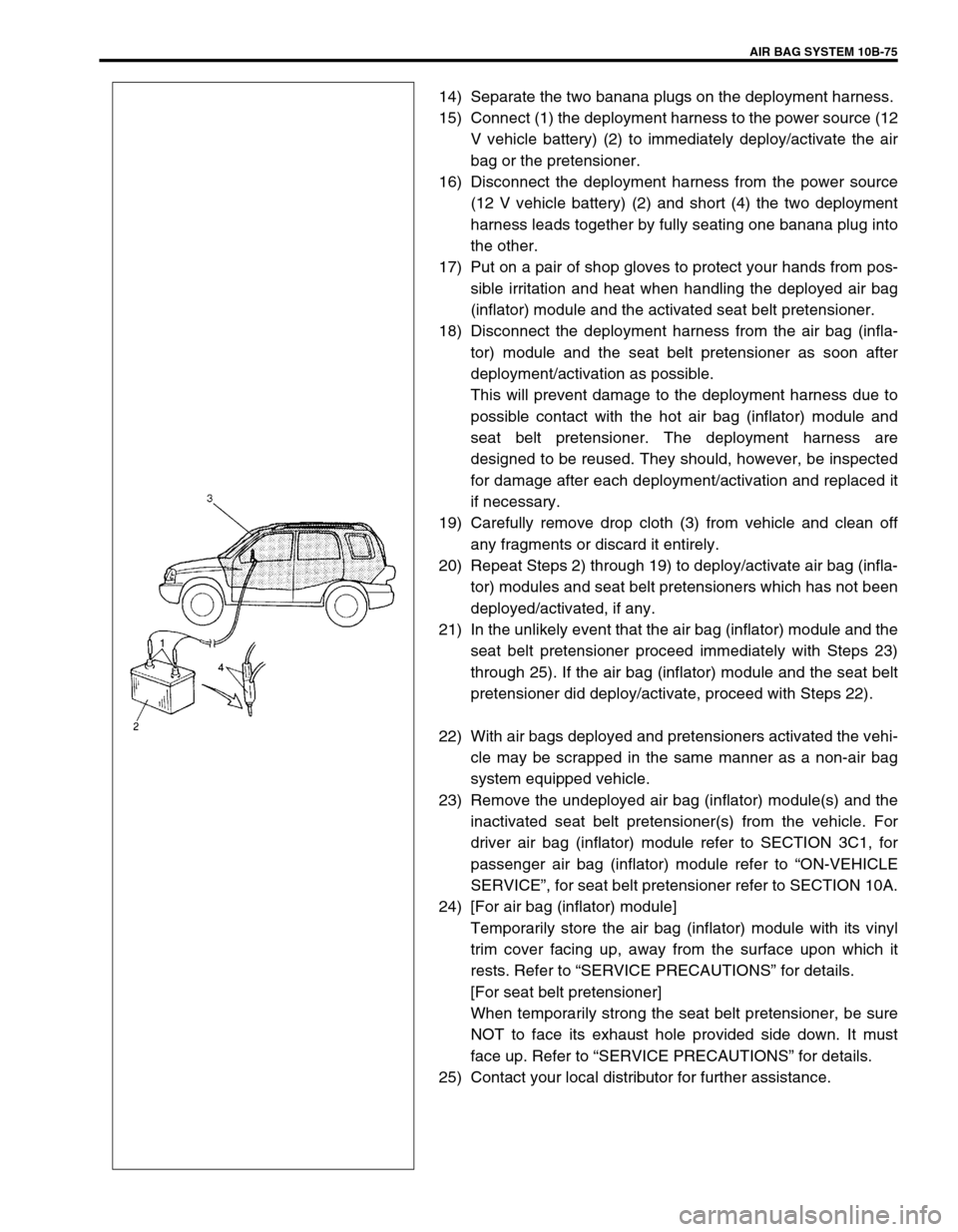Page 385 of 656

6F2-2 IGNITION SYSTEM (FOR H27 ENGINE)
General Description
The ignition system is a direct ignition system. It consists of the parts as described below and has an electronic
ignition control system.
•ECM (or PCM)
It detects the engine condition through the signals from the sensors, determines the most suitable ignition
timing and time for electricity to flow to the primary coil and sends a signal to the igniter (in ignition coil
assembly).
•Ignition coil assembly (including an igniter and an ignition coil)
The ignition coil assembly has a built-in igniter and ignition coil which turns ON and OFF the primary current
of the ignition coil according to the signal from ECM (or PCM). When the ignition coil primary current is
turned OFF, a high voltage is induced in the secondary wiring. One ignition coil is in charge of ignition of one
cylinder only.
•Spark plug and noise suppressor
•CMP sensor, TP sensor, ECT sensor, IAT sensor, VSS, knock sensor and MAF sensor
For their details, refer to Section 6E2.
This ignition system does not have a distributor and high-tension cords but each cylinder has an ignition coil
assembly (igniter and ignition coil) and the secondary voltage which occurred in the ignition coil is sent to the
spark plug directly. Also, the signal(s) are sent from the CMP sensor to ECM (or PCM) so as to control each igni-
tion coil independently through the igniter (in ignition coil assembly).
Components
NOTE:
For other components not found in this figure, refer to Section 6E2.
1. Ignition coil assembly (igniter and ignition coil)
2. CMP sensor
3. Noise suppressor
4. ECM (or PCM)
5. Spark plug
Page 648 of 656

AIR BAG SYSTEM 10B-71
18) Dispose of the deployed air bag (inflator) module and the
activated seat belt pretensioner through normal refuse chan-
nels after it has cooled for at least 10 minutes and tightly seal
the air bag (inflator) module and the seat belt pretensioner in
a strong vinyl bag. (Refer to “DEPLOYED AIR BAG (INFLA-
TOR) MODULE AND ACTIVATED SEAT BELT PRETEN-
SIONER DISPOSAL” in detail.)
19) Wash your hands with mild soap and water afterward.
20) Ensure that the deployment harness has been disconnected
from the power source and that its two banana plugs have
been shorted together by fully seating one banana plug into
the other.
21) Disconnect the deployment harness from the air bag (infla-
tor) module and the seat belt pretensioner.
22) Temporarily store air bag (inflator) module or seat belt pre-
tensioner.
[For driver air bag (inflator) module]
Temporarily store the air bag (inflator) module with its vinyl
trim cover facing up, away from the surface upon which it
rests. Refer to “SERVICE PRECAUTIONS” for details.
[For seat belt pretensioner]
When temporarily strong the seat belt pretensioner, be sure
NOT to face its exhaust hole provided side down. It must
face up. Refer to “SERVICE PRECAUTIONS” for details.
23) Contact your local distributor for further assistance.
NOTE:
The remaining steps are to be followed in the unlikely
event that the air bag (inflator) module did not deploy or
the seat belt pretensioner did not activate after following
these procedures.
Page 652 of 656

AIR BAG SYSTEM 10B-75
14) Separate the two banana plugs on the deployment harness.
15) Connect (1) the deployment harness to the power source (12
V vehicle battery) (2) to immediately deploy/activate the air
bag or the pretensioner.
16) Disconnect the deployment harness from the power source
(12 V vehicle battery) (2) and short (4) the two deployment
harness leads together by fully seating one banana plug into
the other.
17) Put on a pair of shop gloves to protect your hands from pos-
sible irritation and heat when handling the deployed air bag
(inflator) module and the activated seat belt pretensioner.
18) Disconnect the deployment harness from the air bag (infla-
tor) module and the seat belt pretensioner as soon after
deployment/activation as possible.
This will prevent damage to the deployment harness due to
possible contact with the hot air bag (inflator) module and
seat belt pretensioner. The deployment harness are
designed to be reused. They should, however, be inspected
for damage after each deployment/activation and replaced it
if necessary.
19) Carefully remove drop cloth (3) from vehicle and clean off
any fragments or discard it entirely.
20) Repeat Steps 2) through 19) to deploy/activate air bag (infla-
tor) modules and seat belt pretensioners which has not been
deployed/activated, if any.
21) In the unlikely event that the air bag (inflator) module and the
seat belt pretensioner proceed immediately with Steps 23)
through 25). If the air bag (inflator) module and the seat belt
pretensioner did deploy/activate, proceed with Steps 22).
22) With air bags deployed and pretensioners activated the vehi-
cle may be scrapped in the same manner as a non-air bag
system equipped vehicle.
23) Remove the undeployed air bag (inflator) module(s) and the
inactivated seat belt pretensioner(s) from the vehicle. For
driver air bag (inflator) module refer to SECTION 3C1, for
passenger air bag (inflator) module refer to “ON-VEHICLE
SERVICE”, for seat belt pretensioner refer to SECTION 10A.
24) [For air bag (inflator) module]
Temporarily store the air bag (inflator) module with its vinyl
trim cover facing up, away from the surface upon which it
rests. Refer to “SERVICE PRECAUTIONS” for details.
[For seat belt pretensioner]
When temporarily strong the seat belt pretensioner, be sure
NOT to face its exhaust hole provided side down. It must
face up. Refer to “SERVICE PRECAUTIONS” for details.
25) Contact your local distributor for further assistance.